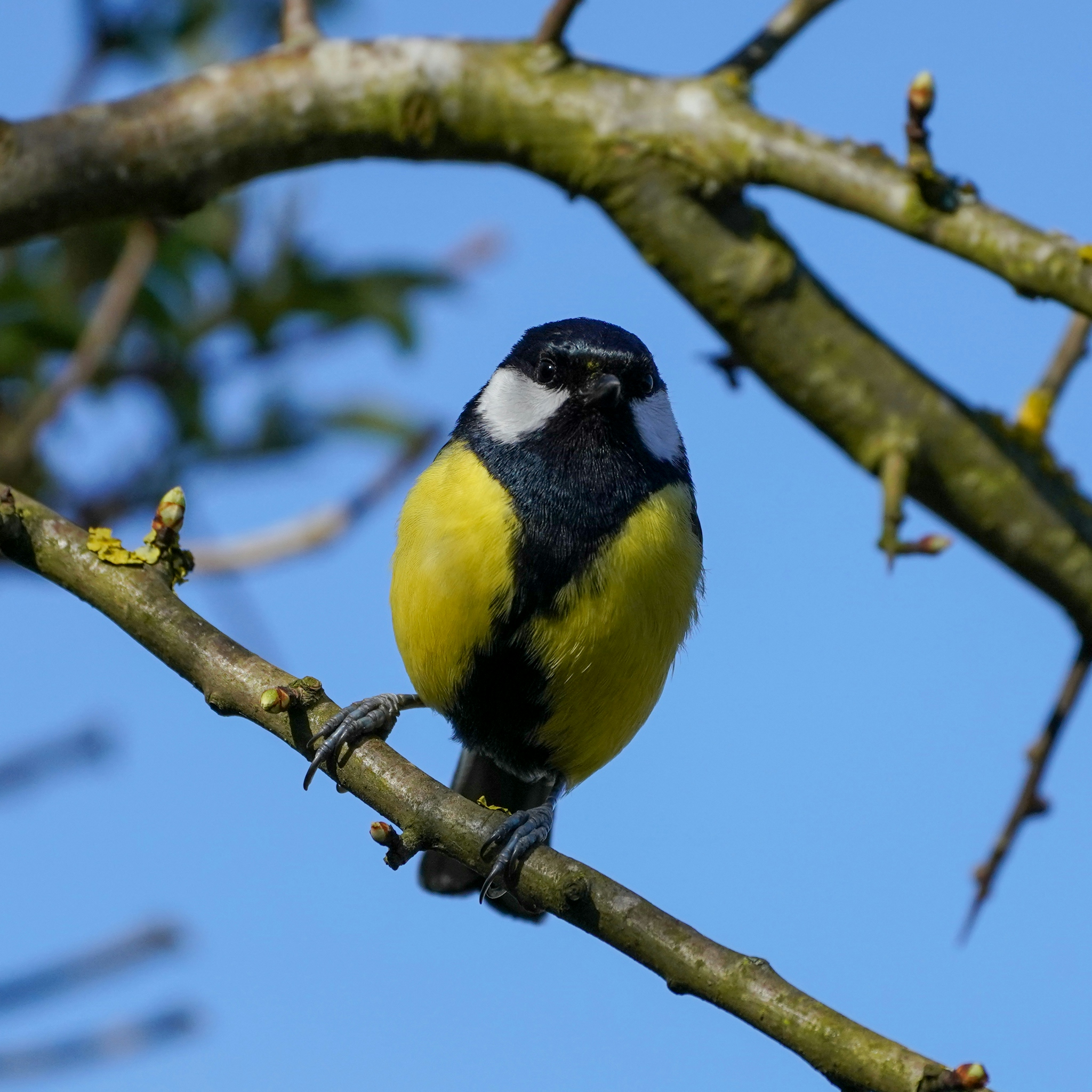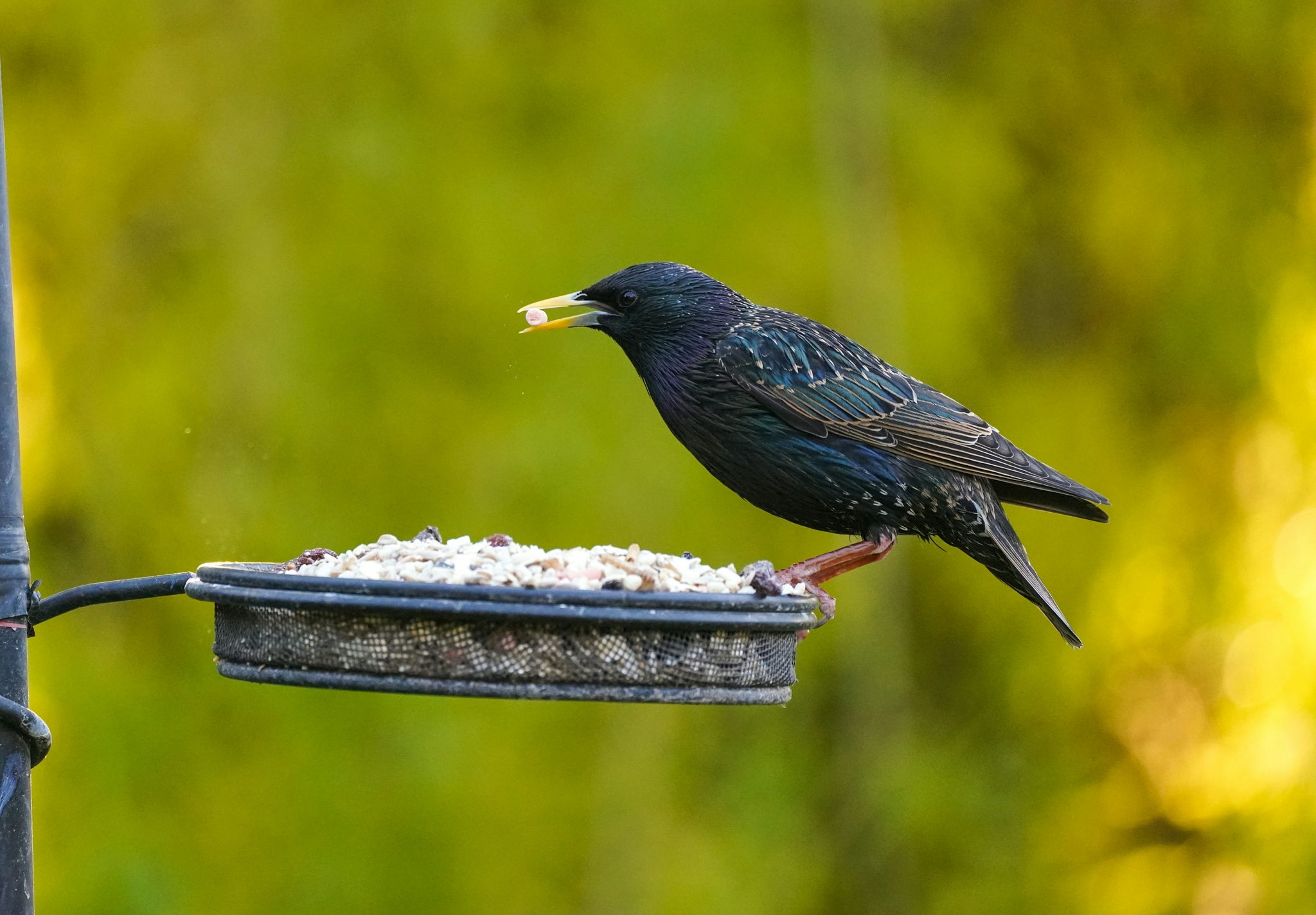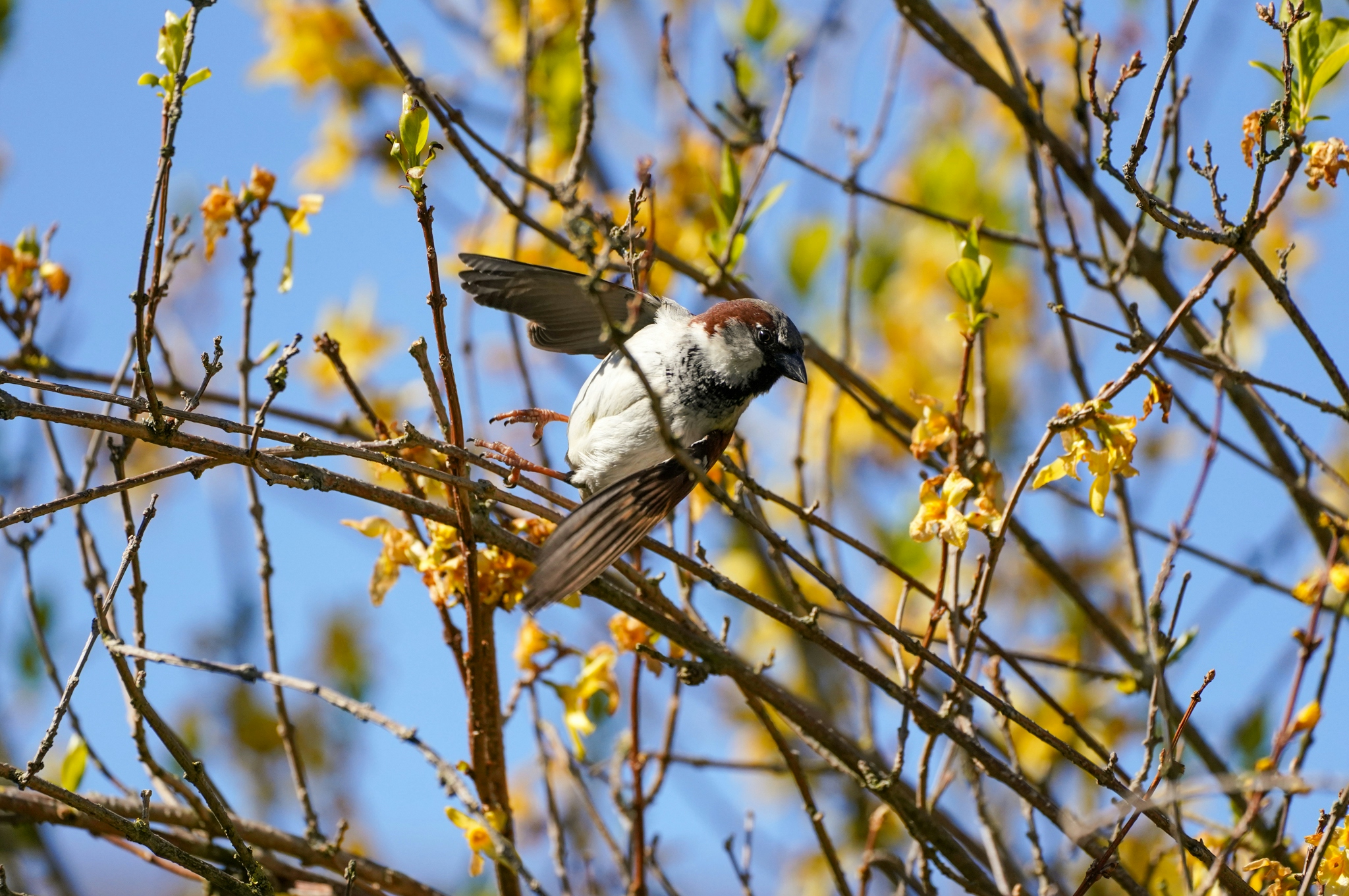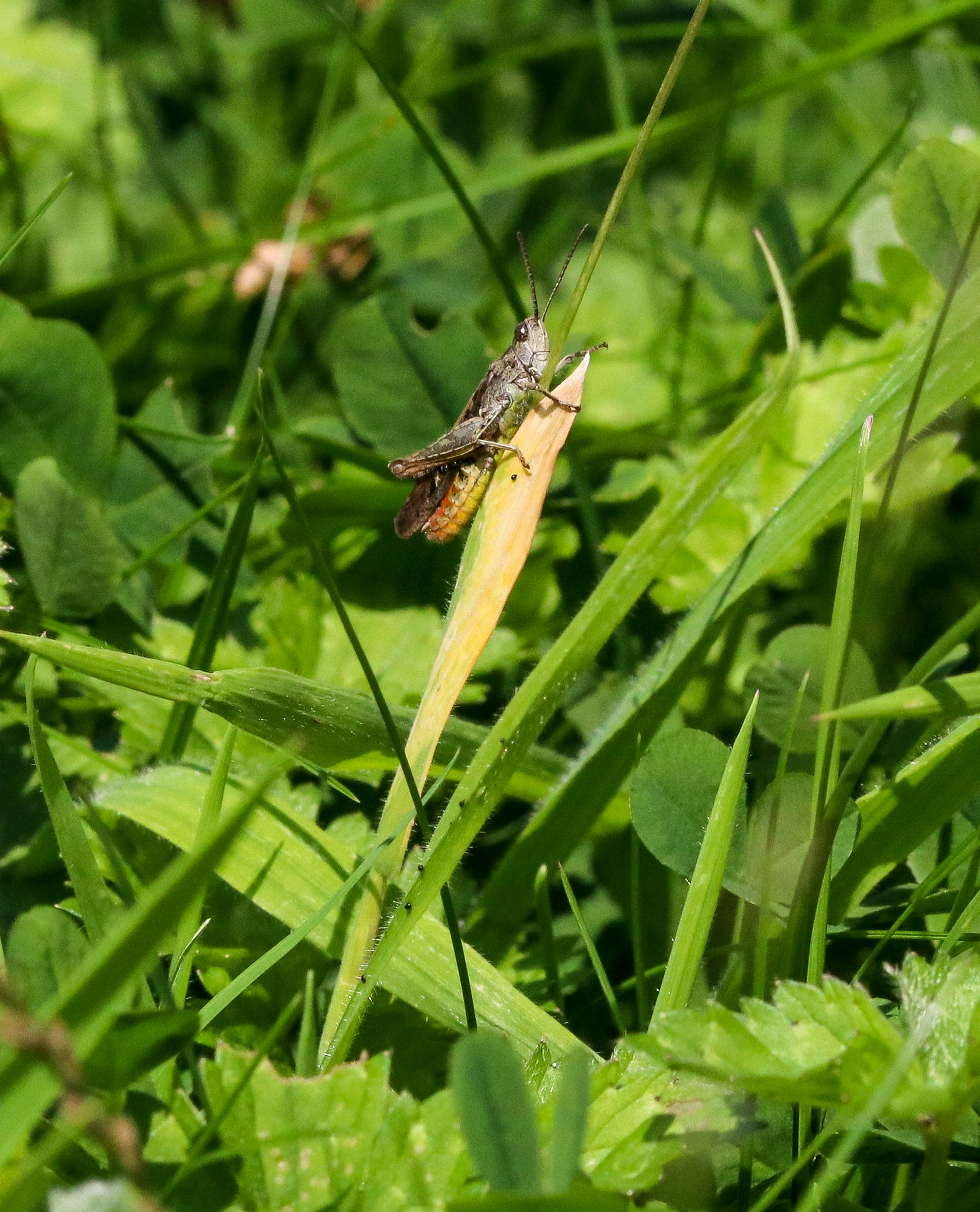HOW TO BRING ALL THE BIRDS TO YOUR YARD

A great tit
Spoiler alert: the solution is more mealworm-based than milkshake-based.
No matter where you are, and whether you’ve got a big country garden, a small concrete courtyard, a shared grassy space, or any other type of outdoor space, you can attract more birds of different varieties to your garden. Here’s how.
FEED THEM
To state the glaringly obvious, providing food is the best way to attract new birds to your garden. If you put some bird feed out you’ll almost certainly get birds interested, even if it takes them a few weeks to clock on.
Different food attracts different birds - I’ve written a separate post dedicated the types of bird food and their advantages and disadvantages.

A starling eating suet pellets
WATER THEM
This also feels obvious but a lot of people forget it.
Make sure you provide fresh water for your birds both at feeder level if you have raised feeders, and at ground level. If you don’t have a pond, you can fill a saucer with water.
Water is especially important in hot weather, but also in snow and ice - be sure to nip out and break the ice regularly (and gently - melting it if it’s a pond) when it’s sub-zero out.
REARRANGE FOR THEM
The default advice with bird feeders and water is to put them close to cover like trees and bushes, but in my experience you need to look at your individual environment and get to know your local birds.
I don’t put my feeders near the bushy tree at the edge of my garden because I know that my neighbours’ cats like to sit in there and wait for unsuspecting feathery victims.
If you see cats around certain areas of your garden, move your feeders out into the open. Whilst birds generally prefer to be closer to cover, they will feed in the open if it means they can keep an eye on their surroundings.
If your feeder is in the open and doesn’t seem to be generating much interest, try moving it closer to a fence, tree or bush.

House sparrows like the cover of dense bushes
KEEP THEM SAFE FROM DISEASE
If you’re feeding birds it’s important to keep the feeders clean; there are a number of avian diseases, including trichinomonosis, that can be spread through feeders. This is one reason why I prefer to feed primarily using a no mess mix in a mesh dish instead of via several complex feeders.
Empty and clean your feeding and water equipment regularly and especially if you see any birds with symptoms of disease (lethargy, fluffed-up feathers, difficulty feeding or swallowing). Don’t use harsh cleaners - just soak with hot soapy water and make sure that they are fully rinsed and, in the case of feeders, 100% dry before you put any new feed into them (otherwise they’ll get damp and mouldy).
DON'T CUT THEM OFF
I’m not saying you need to get a bird-sitter when you go on holiday, but do try to be consistent with putting food out if you can.
I notice a much higher number and variety of visitors when I regularly put fresh food out - when I go through a period of forgetting to put it out it takes a while for the birds to come back for their breakfast.
GARDEN FOR INSECTS
Birds feed their chicks insects - they don’t feed them the food that you leave out. The bird food you provide will be a welcome quick meal for hungry parents, but to raise the next generation birds must be able to find insects - a lot of them.
There are some tips for managing your garden for birds below, but when it comes to making sure birds can find enough insects to feed their chicks, it boils down to making sure you have as much insect real estate as possible.
Insects don’t really live in plastic grass, they don’t live on patios, and there aren’t many in empty flower beds or on stones. The more plants, trees, bushes, grass, and flowers you can incorporate into your garden, the more insects you’ll have.

Jiminy Cricket in the long grass in my garden (ok, it's a field grasshopper not a cricket)
MANAGE YOUR ENVIRONMENT FOR THEM
To increase the number of birds in your garden and to help them thrive, you should try to improve the general biodiversity of your mini ecosystem by:
Planting a variety of plants, especially ones favoured by insects including pollinators.
Maintaining different heights of cover, like low plants, mid-height bushes, and trees - small birds particularly love dense bushes.
Planting things that produce seeds that birds like to eat, like teasels.
Keeping your grass - ground-feeding birds can’t reach their invertebrate food through artificial grass or concrete.
Create a wildlife pond - this will give birds somewhere to drink and bathe and increase the supply of insects for them to eat and feed to chicks.
Keep your ivy, nettles and brambles (even if you relegate them to a carefully-controlled area).
Stay organic - step away from the poisonous chemicals (pesticides and herbicides) - you don’t need them, and they devastate your mini-ecosystem and accumulate in birds.
Putting a bell on your cat’s collar - domestic cats kill a lot of wild birds.
Do you have any more tips? What have you done for wildlife in your garden? Let’s talk about it!
Share with your friends
Subscribe to learn more
Join me in exploring our natural world and cultural heritage as we learn how to protect and restore it. Get notified on my latest posts and a monthly newsletter on wider conversation topics for us to chat about.
Recent Posts
If you enjoyed this one, then you might like these too.